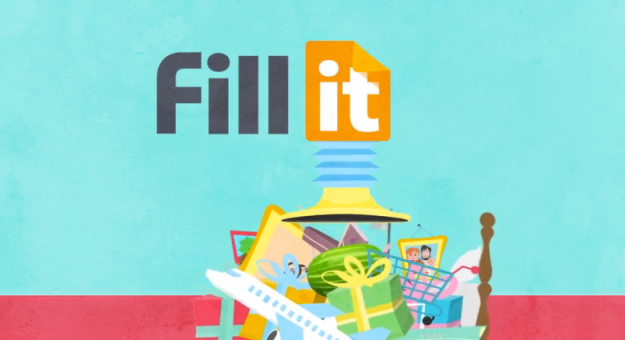
As amazing as the Web is nowadays, there is one area that remains a relic of the past: Online forms. Shopping for car insurance, applying for a new credit card, replacing your driver’s license – all these activities and many more require us to go through the arduous task of filling in our personal information. It’s tedious, time-consuming, and a downright bore. Luckily, online data vault provider Personal.com has the answer we may be looking for.
It’s called Fill It, a Web app that works by allowing you to save all of your personal details, everything from usernames and passwords for online accounts to Social Security Numbers of family members, into your Personal.com online vault.
Once you have your Fill It account up and running, install the browser bar bookmark button. As you encounter new forms and enter your personal data, Fill It will automatically save this information to your Personal vault. (You can also manually enter your credentials into Fill It through the online dashboard.) After you have saved a relevant bit of personal information into Fill It, just click the Fill It browser button, and the info will automatically appear in the relevant form fields.
In order to achieve the form-completing wizardry of Fill It, the Personal team has analyzed thousands of different form types, and “taught” Fill It’s algorithms how to properly input your data. This, however, is no easy task, since there are almost as many form types as there are websites that use forms. For example, some online forms break up telephone numbers into three separate fields, while others have a single field. The same goes for credit card numbers, SSNs, driver’s license numbers, names, and more.
“We don’t expect a person to have 12 different versions of their Social Security Number on file,” says Personal co-founder and CEO Shane Green. “People are going to enter one, and Fill It is going to be smart enough to translate [which version a specific form requires], and get it right when it inputs it into the form.”
Fill It currently supports more than 5,000 different types of data fields, says Green, who expects that number to grow “by tens of thousands of fields this year and hundreds of thousands of fields more after that.” Green says Personal will also help make Web forms better overall by providing website operators with the HTML code necessary to input a Fill It-optimized form.
After an hour-long demo of Fill It, I was beyond convinced of its value, especially after having spent more than two hours shopping for new motorcycle insurance a week before (sans Fill It, of course). But despite the usefulness of Fill It, I still had two areas of reservation: Is my data private, and is it secure?
On the first point, Green is especially confident: “We do not contractually or legally share your data in anyway,” he says. “Our entire mission is to aggregate and protect your data, and then set permission to it in the way that you choose.”
Green says that Personal “never even sees the data” you input into Fill It or other parts of your Personal vault. And it’s all heavily encrypted. “We don’t know what your Social Security Number is, or how much income you have, or how tall you are,” he says.
As for the security, Green says they could not be doing more on the backend to protect your sensitive information.
“We are a company that cannot even get to your data ourselves,” he says. “We’ve protected you even from us. We have done everything that we know how to do [to keep your data safe].”
There is one security weak spot, however: The Personal.com login page. If someone gains access to your personal account, well, you’re probably screwed. This is a vulnerability Green and his team fully recognize, and one they plan to fix when Personal comes out of beta by instituting multi-factor authentication. But for now, we’re stuck with regular ol’ passwords as the only barrier between our most-sensitive information and the bad guys.
To try out Fill It, click here.


